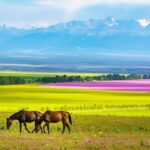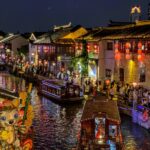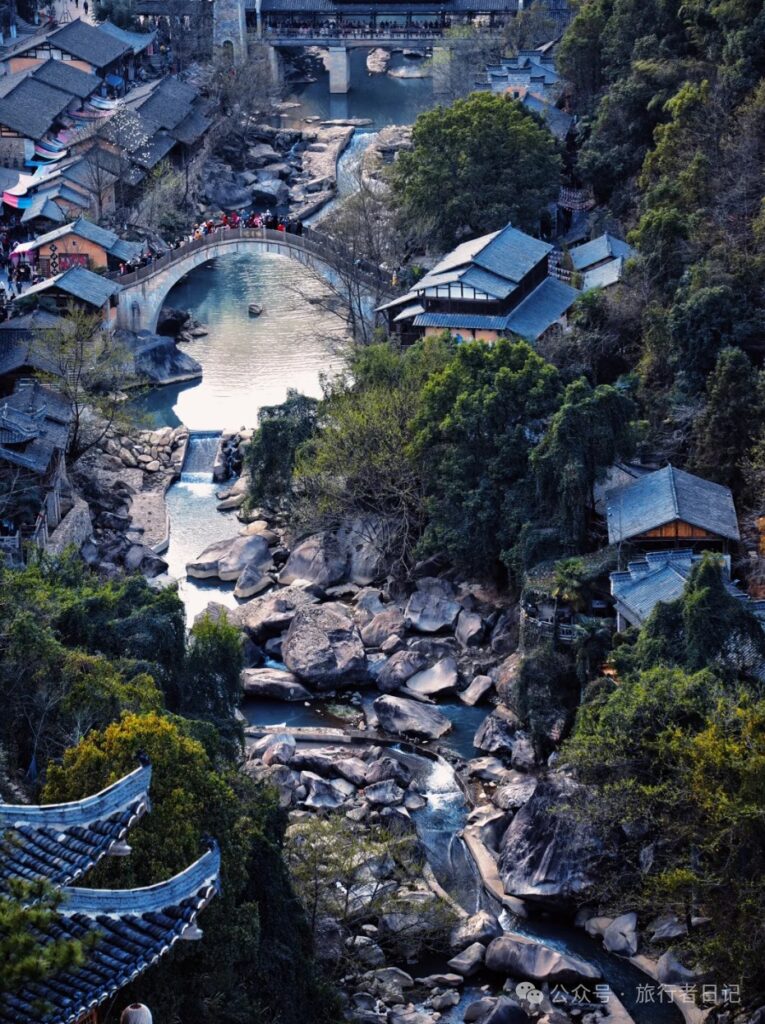

When I set foot on the enchanting land of Shangrao City, it felt like I had traveled through a time tunnel and entered a world filled with legendary charm—a stunning painting woven by natural scenery, historical culture, and folk customs.
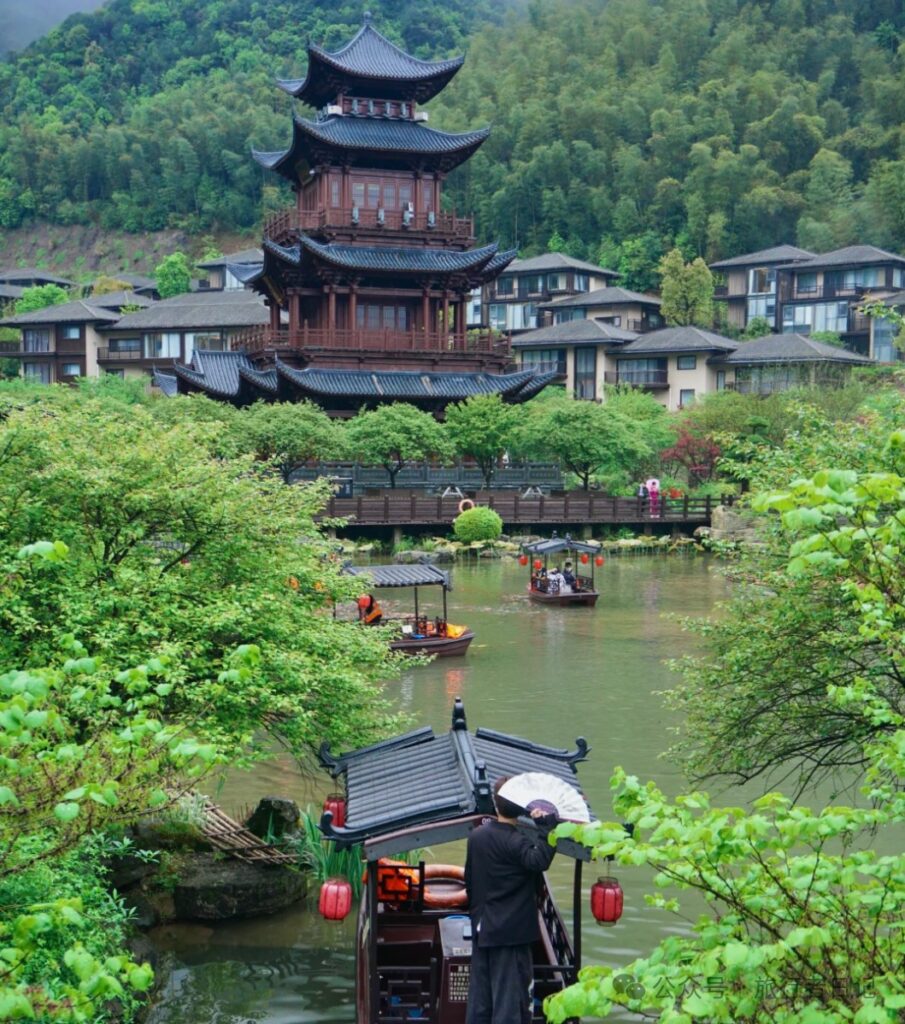
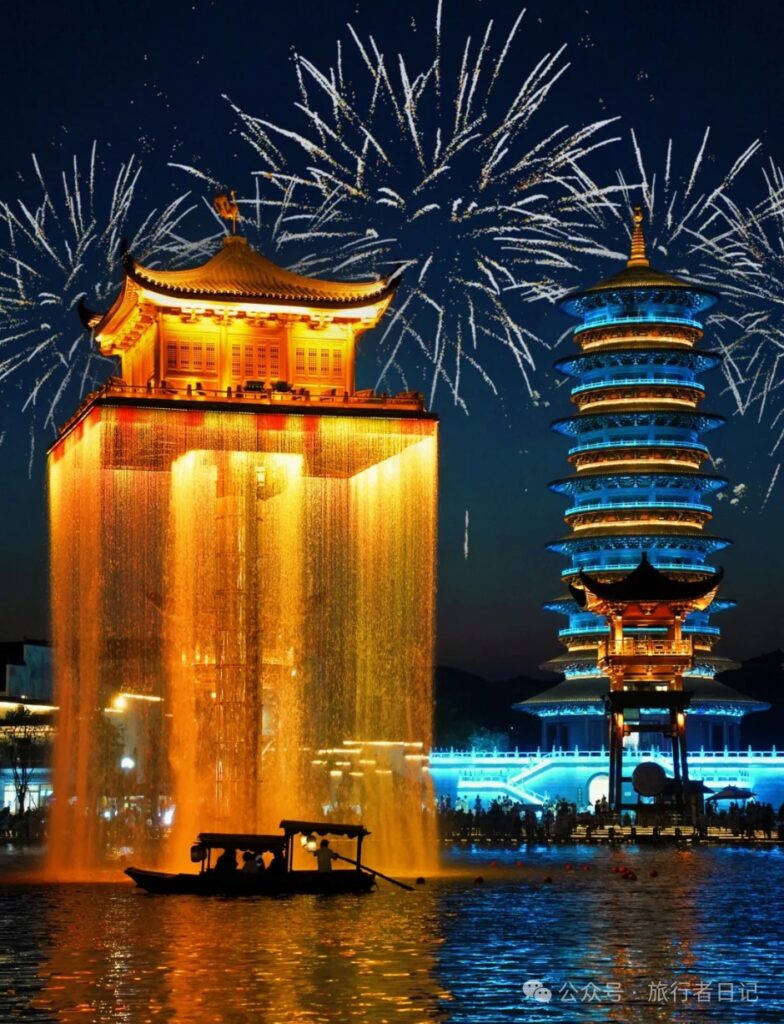
Eight scenic spots, eight stories, a journey of the soul, and a trip of gratitude for nature’s gifts.
Where to Visit?
Wuyuan Huangling
A Heavenly Mountain Retreat Amidst Terraced Fields
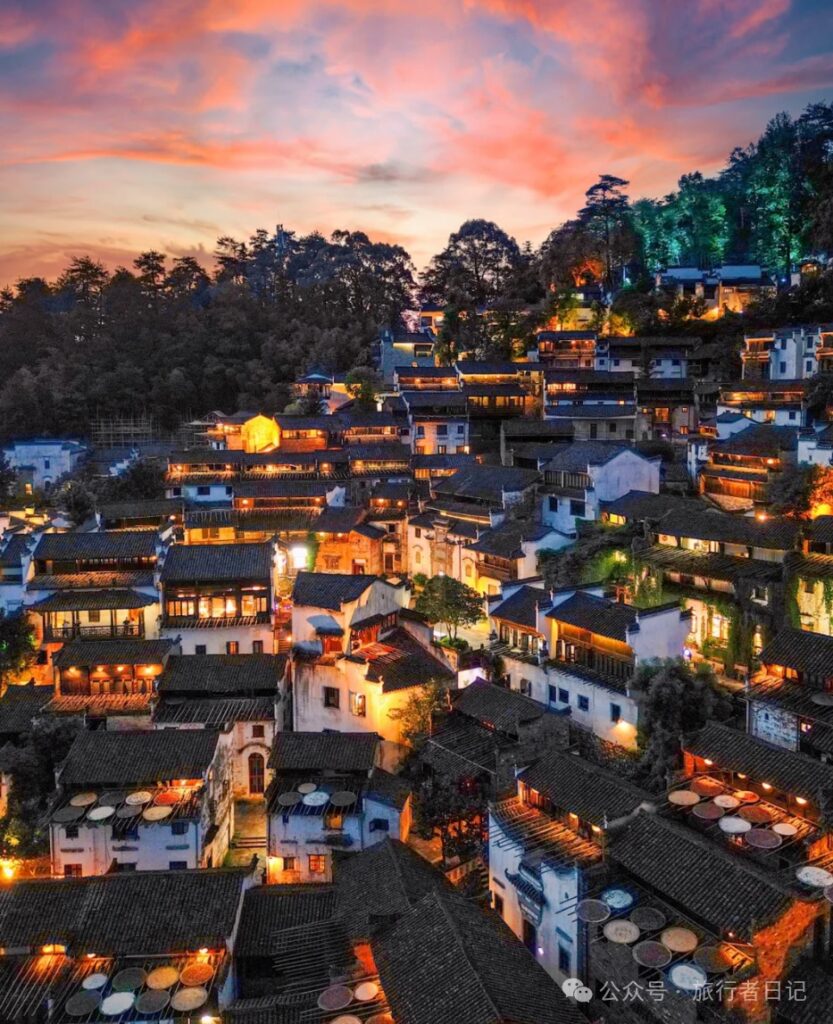
Huangling is a typical mountain village where the houses are arranged in a fan-shaped, terraced layout around the water outlet. Huangling is renowned for its “Shaiqiu” (drying crops under the sun), and the village’s “Tianjie” (sky street) connects classic ancient buildings like a jade belt. Huizhou-style shops line the street, with shops in the front and workshops in the back, resembling a flowing, miniature version of “Along the River During the Qingming Festival.”
The village is surrounded by thousands of ancient trees and tens of thousands of mu of terraced fields, showcasing stunning “earth art” in all four seasons. Unique tourism experiences allow you to walk across suspension bridges, slide down zip lines, and take a cable car to overlook the unique “Shaiqiu” spectacle.
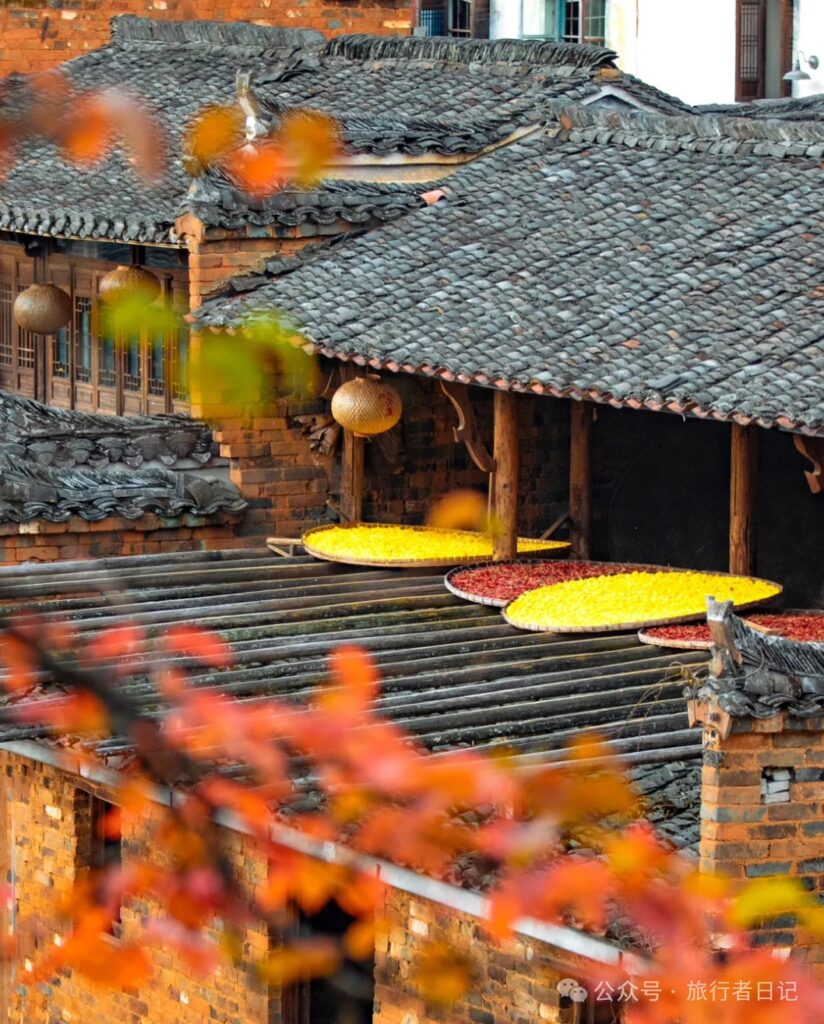
🎫 25 yuan/person. Free unlimited visits with Jiangxi Cultural Tourism Card, reservations available on the same day.
🕐 8:00-21:00
Note: You must purchase a cable car ticket to enter the scenic area.
Wangxian Valley
A Mysterious Paradise in the Eastern Foothills of the Ling Mountains
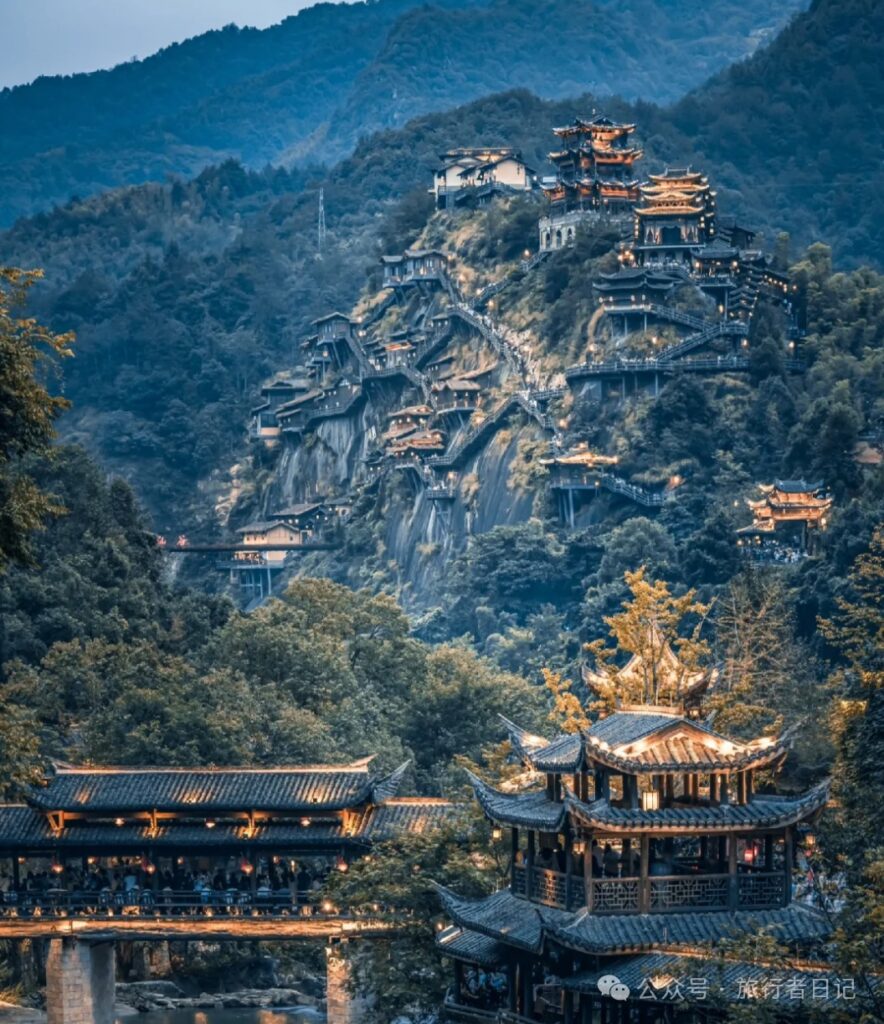
The Wangxian Valley scenic area boasts a rich diversity of trees, bamboos, and medicinal herbs, forming an environment of East Asian biodiversity. The abundant flora and fauna, especially the rare birds, mammals, and amphibians, attract countless nature enthusiasts. The mysterious beauty here seems to transport visitors into a dreamlike paradise.
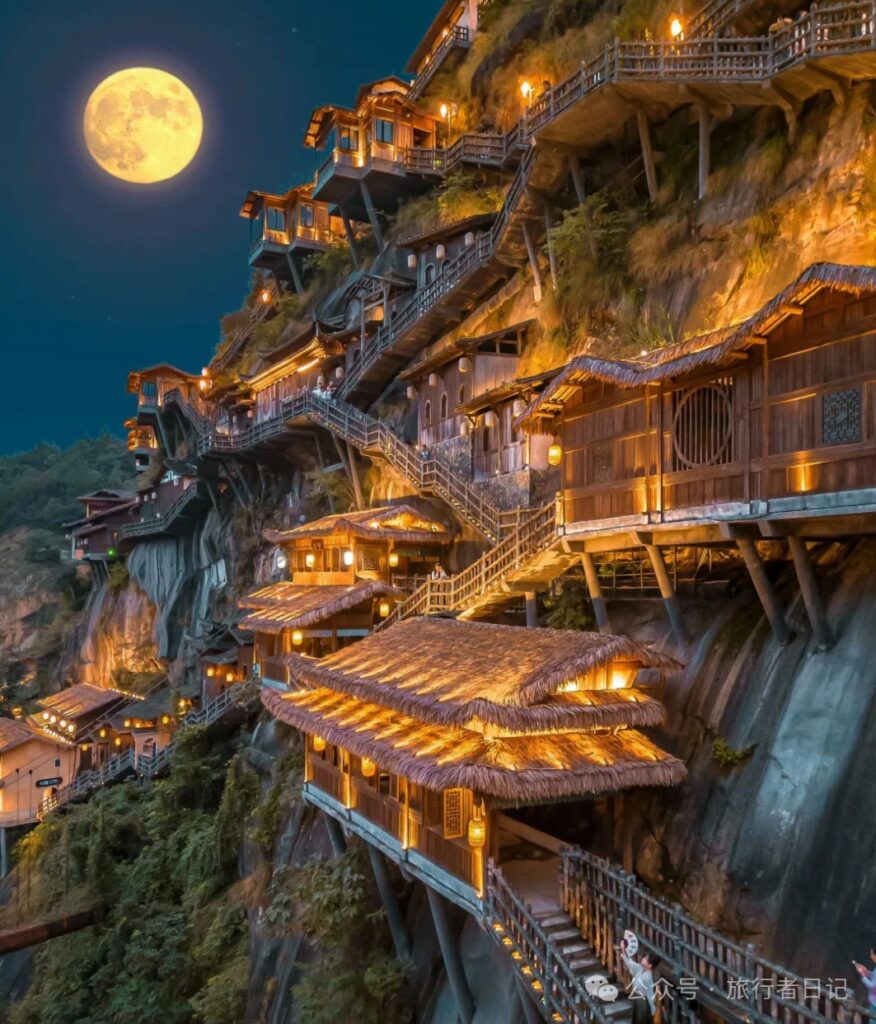
🎫 85 yuan/person
🕐 08:00-21:30
Note: The night view is particularly stunning.
Sanqing Mountain
A Taoist Wonderland in the Depths of the Clouds
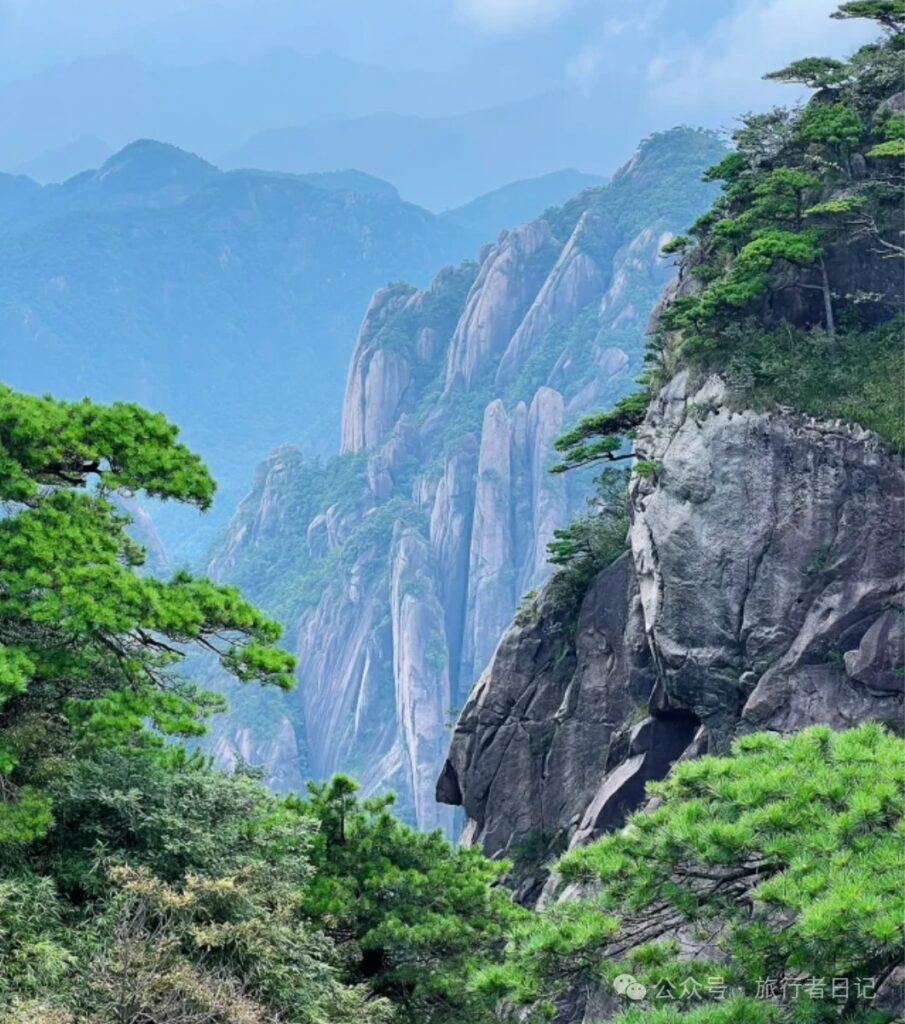
Sanqing Mountain is the ancestral mountain of the Quanzhen School of Taoism. It gathers the beauty of heaven and earth and absorbs the spirit of hundreds of rivers. It is a rare gem of scenery on the Chinese land and has long been praised as “the world’s unparalleled blessed land, the first fairy peak south of the Yangtze River.”
Sanqing Mountain combines the grandeur of Mount Tai, the exquisite beauty of Mount Huang, the steepness of Mount Hua, the mist and clouds of Mount Heng, and the tranquility of Mount Qingcheng. It has been lauded by international landscape experts as a world-class wonder, a treasure of humanity, and a spiritual jade realm.
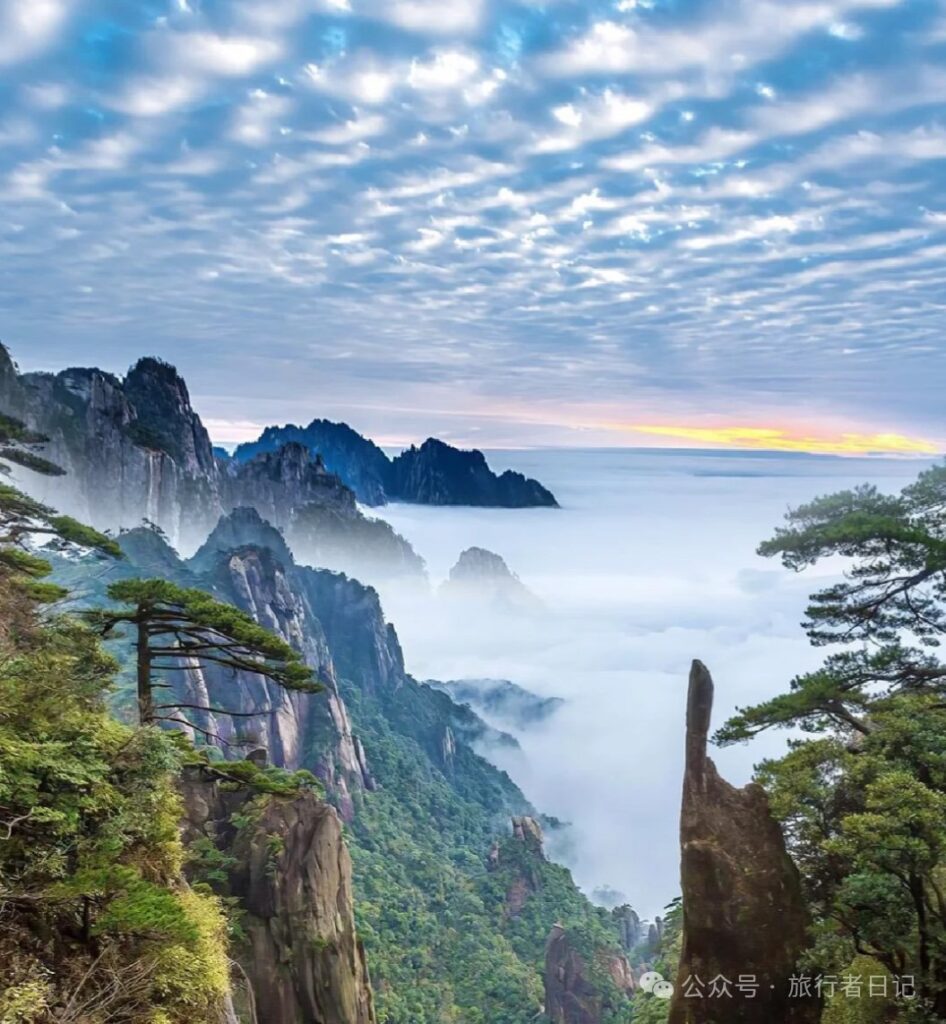
🎫 Free
Note: To watch the sunrise and sunset, it’s best to choose a clear day and stay overnight on the mountain.
Gexian Village Resort
A Tourism Hotspot Immersed in Nature

Gexian Mountain boasts strange peaks, unusual rocks, sea of clouds, and pine waves, rivaling Mount Huang and providing visitors with an experience of close contact with nature. Gexian Village, as part of the resort, integrates eco-tourism, leisure vacation, business exhibitions, and traditional cultural experiences. Here, you seem to find a secret paradise where you can live in harmony with nature.
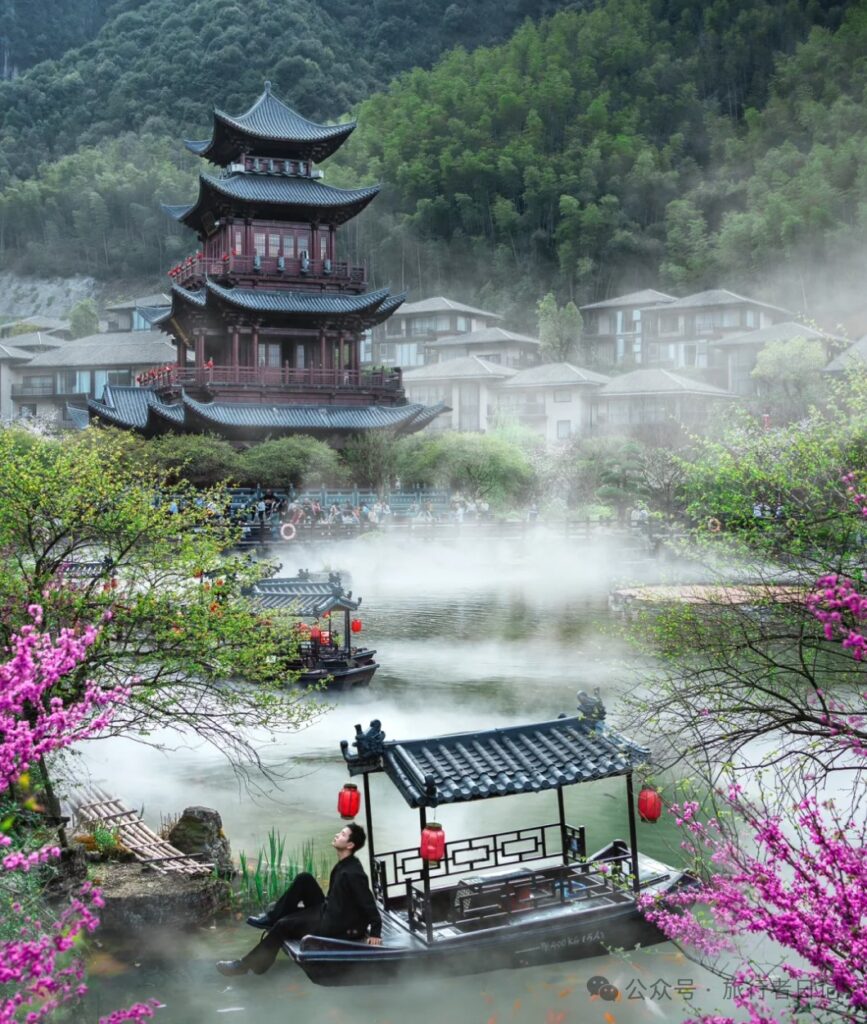
Green mountains, clear waters, red persimmons, yellow flowers…
Layers of green and gol, paired with Han Dynasty village houses, it’s like a utopia.
Come to Gexian Village and spend a few days living like an immortal.
Lingshan Scenic Area
The 33rd Blessed Land Under Heaven
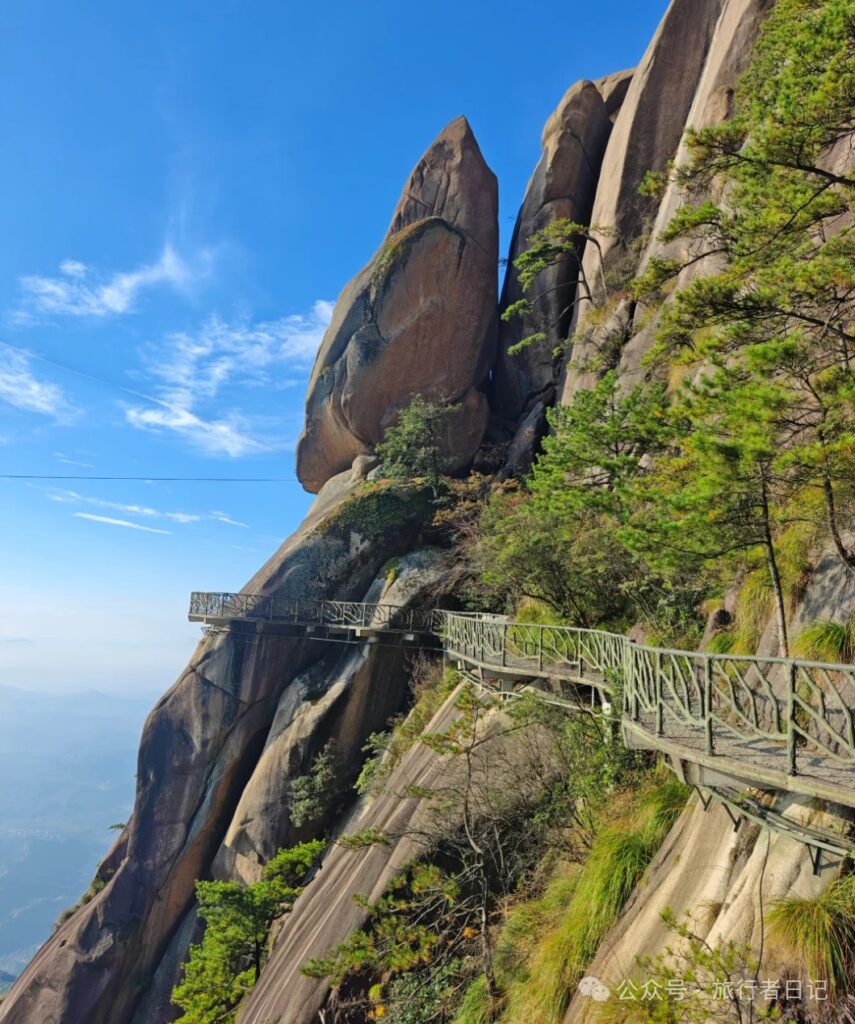
Shangrao Lingshan boasts a unique natural environment, complex geological structures, and diverse landforms. It is a sacred place for Taoism, Buddhism, and Confucianism, and is listed as the 33rd blessed land in Taoist scriptures. Lingshan features a rare circular granite peak forest landform, with seventy-two peaks standing tall and stretching over a hundred miles, resembling a giant dragon crouching in the north of Shangrao city.
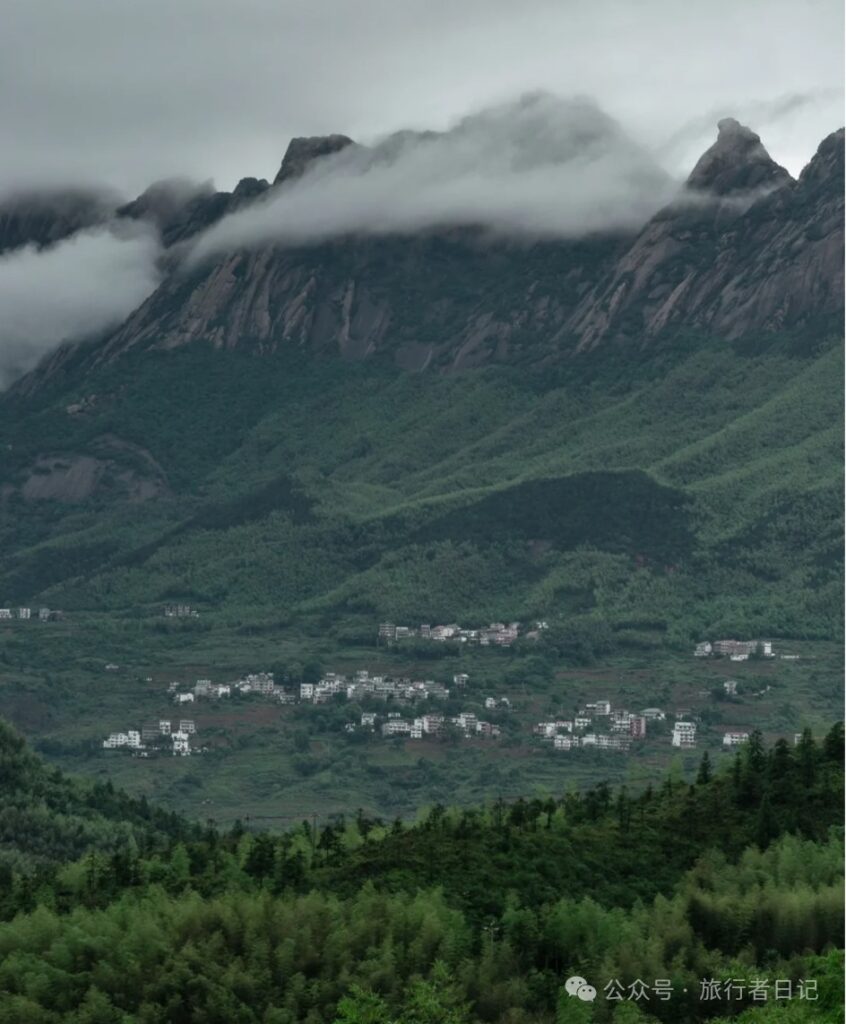
🎫 95 yuan per person. Free unlimited visits with the Jiangxi Cultural Tourism Card, reservations available on the same day.
🕐 08:00-17:00
Note: The cable car needs to be purchased separately. Please consult the scenic area for specific information.
Yulian Waterfall
A Waterfall Cascading Down Three Thousand Feet
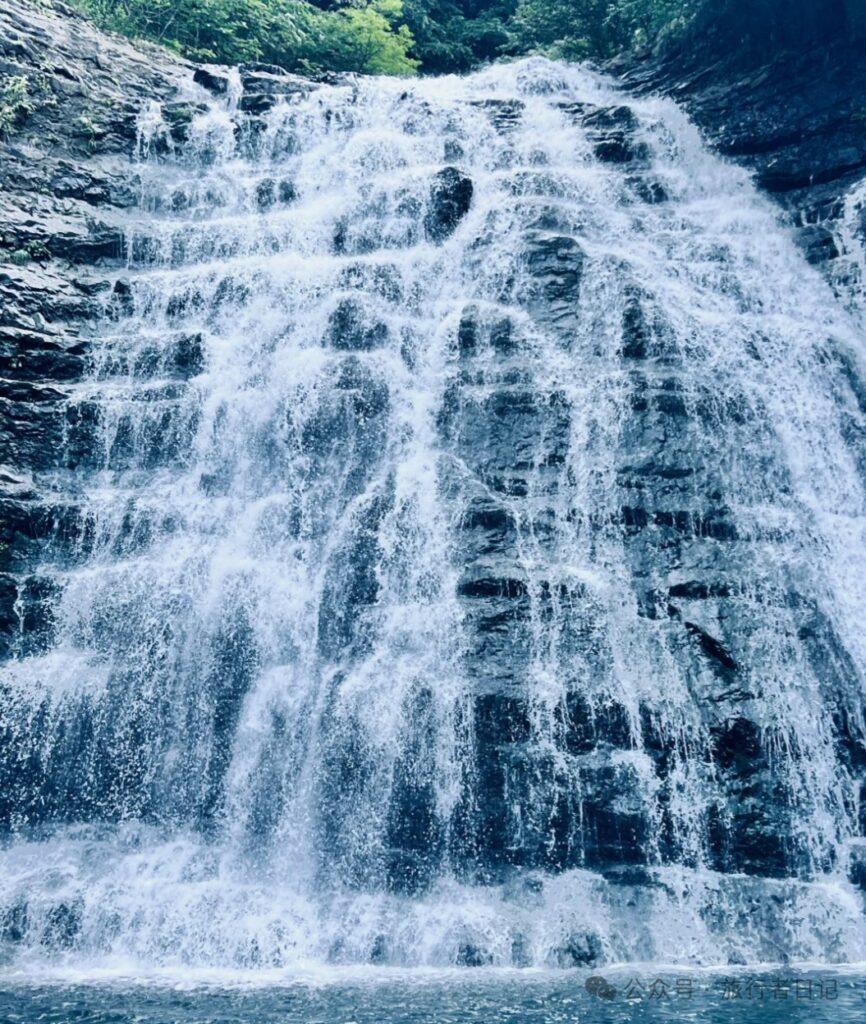
Yulian Waterfall is located in the secluded valley and forest above the Shigu Ridge Power Station diversion canal of Sanqing Mountain, offering a spectacular view. The waterfall plunges straight down from the high cliff, with the water flowing as gracefully as a jade curtain, creating a magnificent sight that can be regarded as a masterpiece of nature.
Standing in front of the waterfall, you can almost feel the power of nature and be stunned by its grandeur. Yulian Waterfall is a miracle of the natural world and a testament to human civilization. In this secluded valley and forest, you can experience the charm of nature and the beauty of harmonious coexistence between humans and nature.
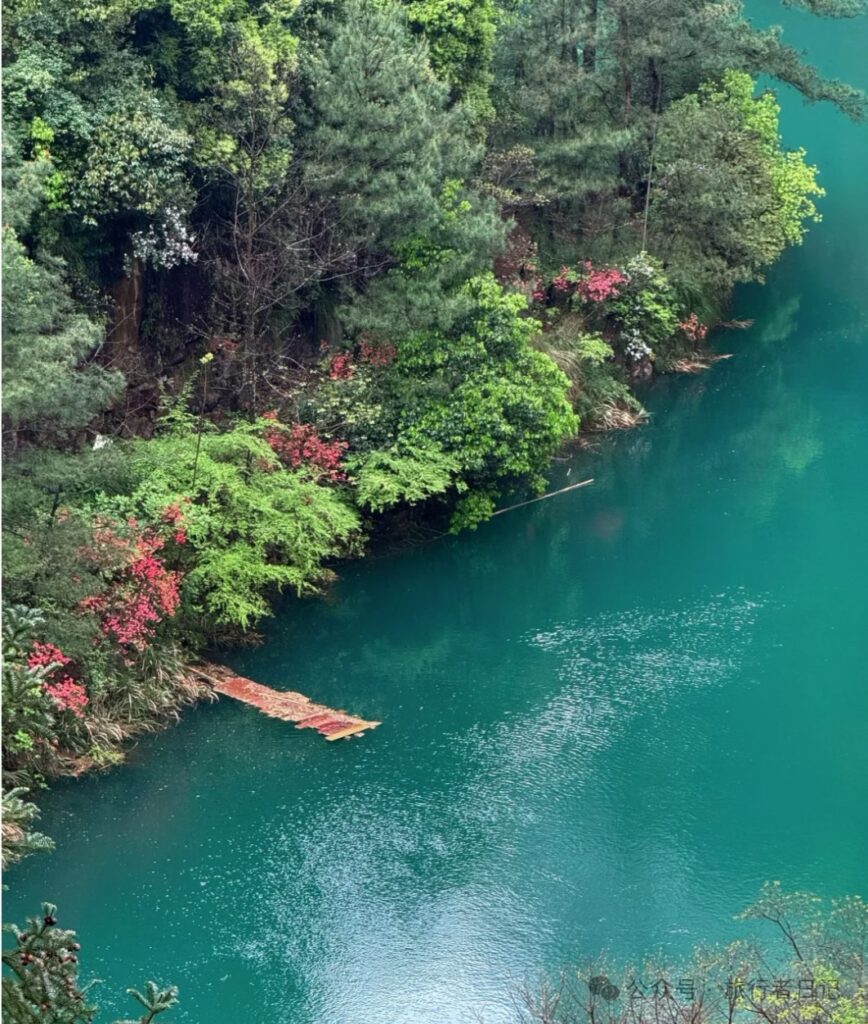
🎫 90 yuan on Meituan
Jujing Village
The Roundest Village in China
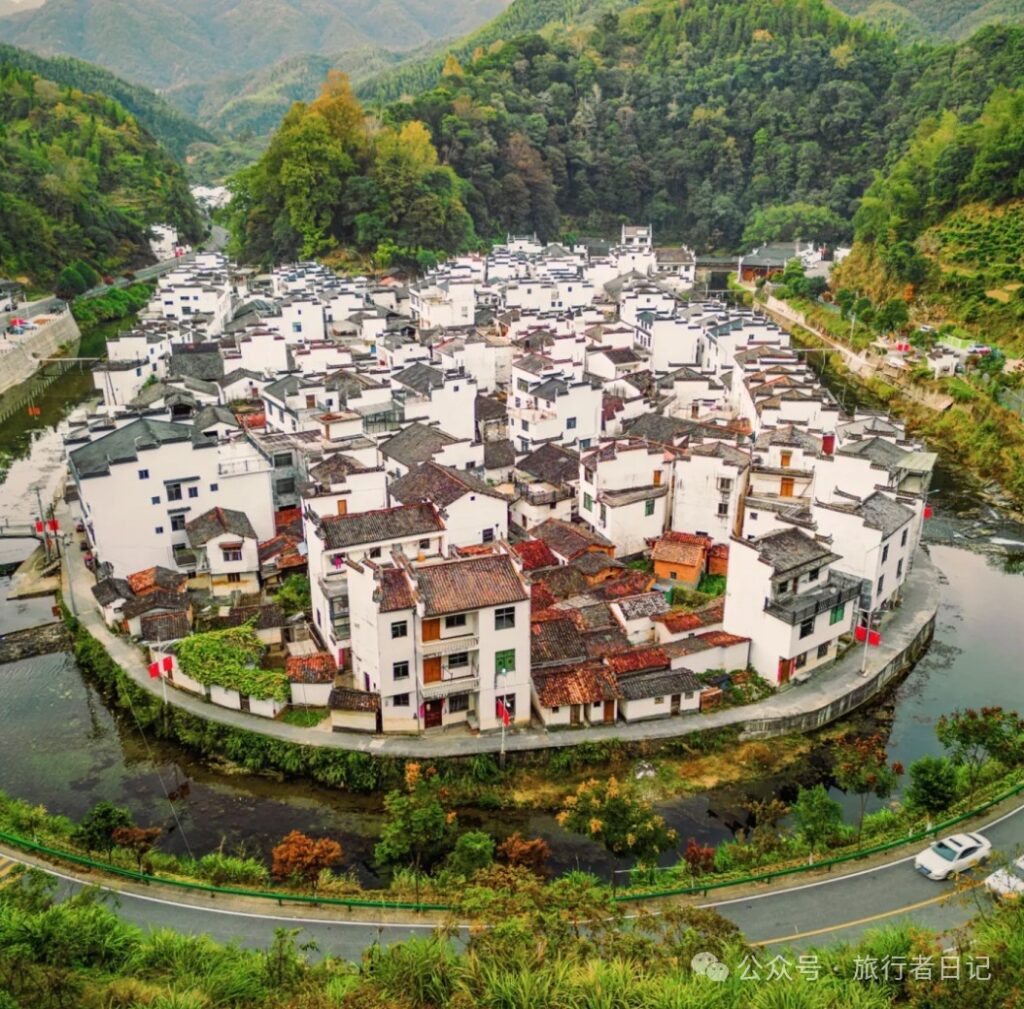
Jujing Village is renowned for its unique geographical environment and rich cultural history. Here, you can feel the tranquility and harmony of an ancient village and savor the original beauty of rural life.
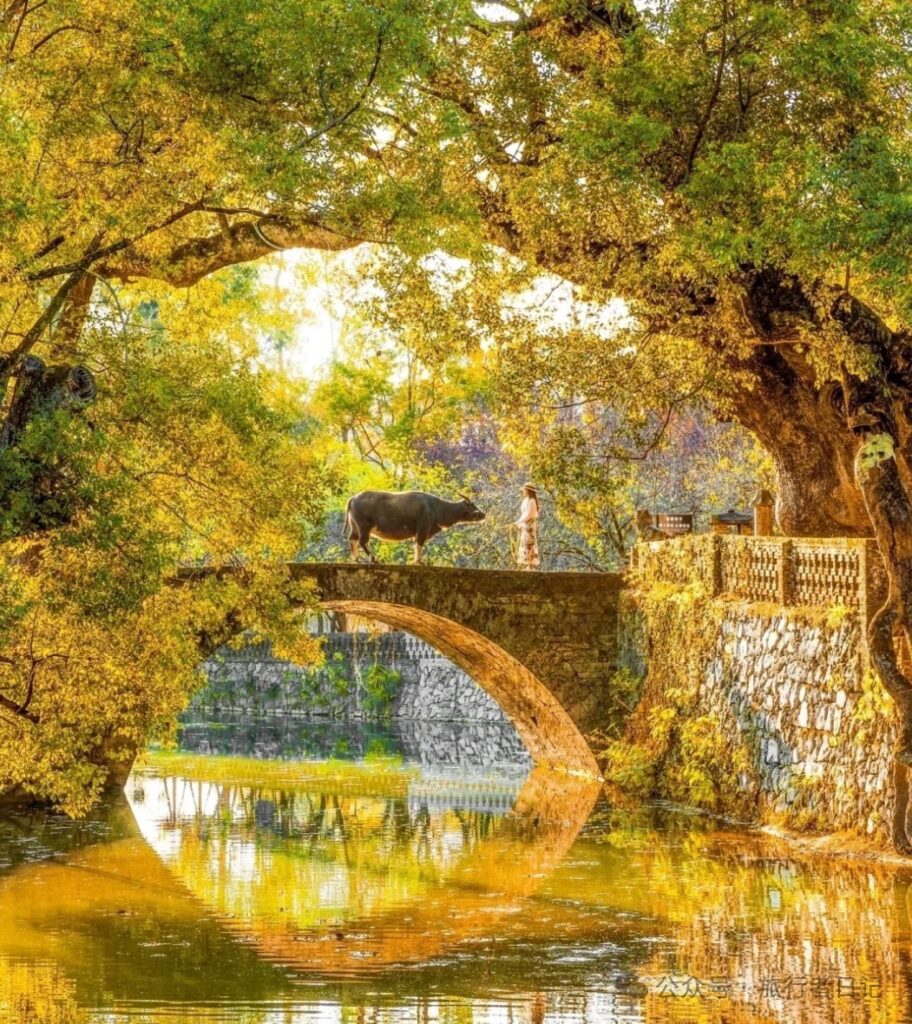
Jujing Village is a village blessed by nature and a rural area that carries historical and cultural heritage.
Read more: Discover the Hidden Gem of Jiangxi: A Thrilling Journey to Shangrao’s Wuxia WonderlandDajianshan Wolong Valley
The Pride of the Most Beautiful Village

Dajianshan Wolong Valley is a pure natural, ecological, and primitive canyon scenic area located in the Dajianshan mountain range, known as the pride of the “most beautiful village.” The Wolong Valley Scenic Area is world-renowned for its unique geographical environment and rich ecological resources, becoming a tourist destination that visitors yearn for.
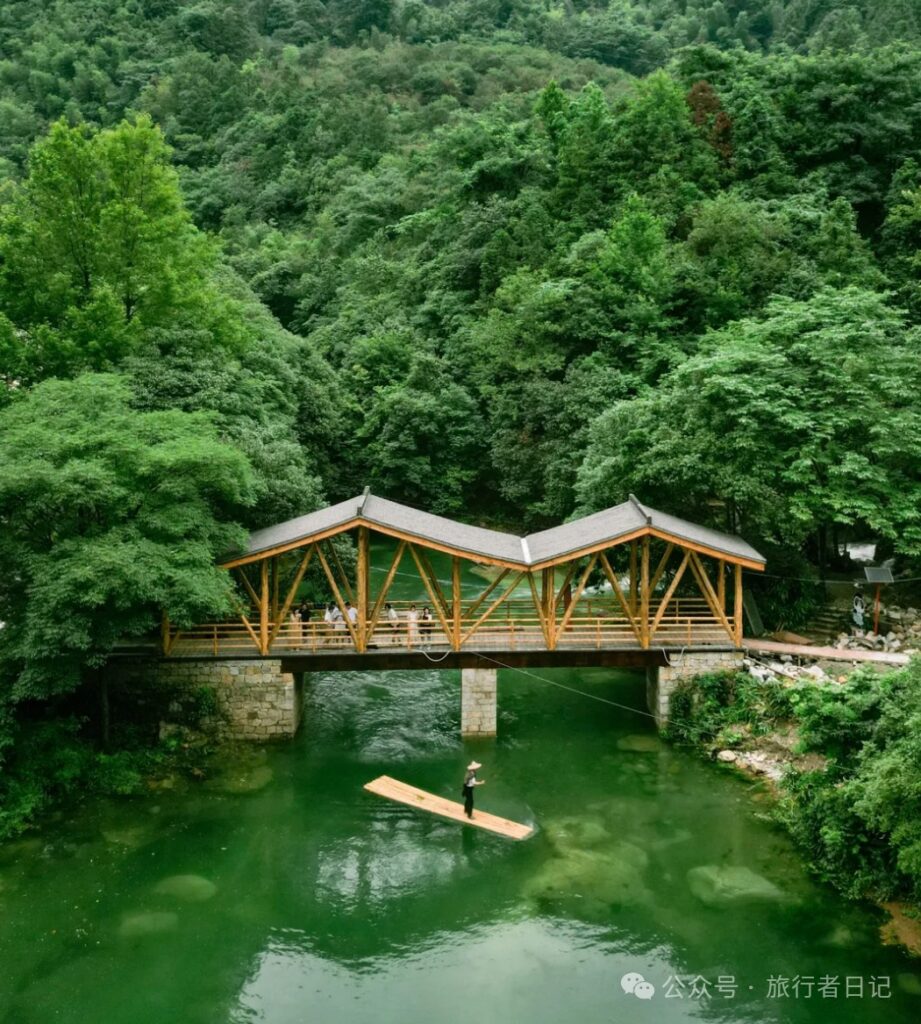
Inside the Wolong Valley Scenic Area, the mountains are lush, and the scenery is picturesque. In this mysterious canyon, you can feel the charm of nature and experience relaxation for both body and mind. Wolong Valley is a pure land and a paradise on earth.
Food Recommendations
Shangrao Fried Noodles
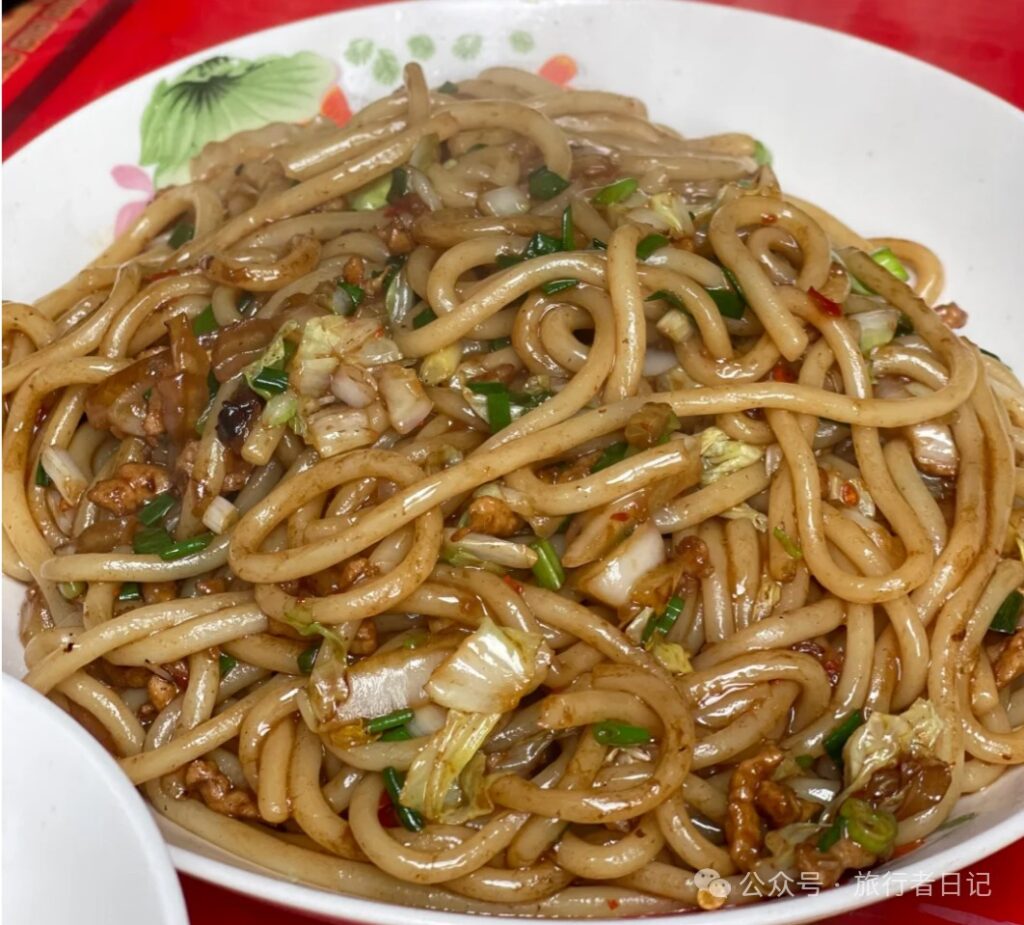
A specialty of the Shangrao area, the main ingredient is Shangrao rice noodles. Shangrao rice noodles are similar in appearance to Guilin rice noodles but have a more chewy texture. They can be stir-fried, boiled, or scalded. Common ingredients for Shangrao fried noodles include lean meat, vegetables, lard, salt, MSG, and soy sauce.
In our Xinzhou District, as long as it’s a noodle shop, the taste is basically the most authentic Shangrao fried noodles. It’s safe to say that our Shangrao fried rice is definitely one of the best in the country.
Shangrao Chicken Legs
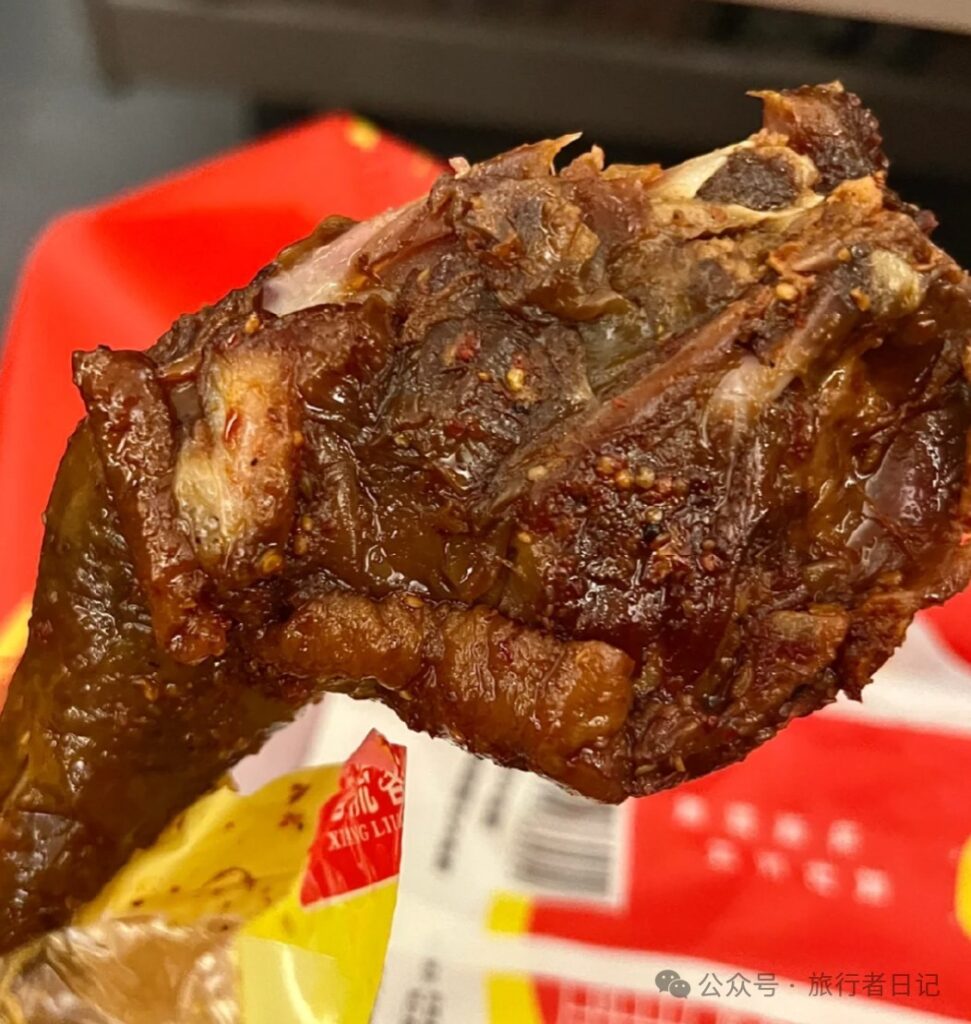
Made from wild chickens in the mountainous areas around Shangrao, they have a delicious flavor and are a major specialty of Shangrao City. Shangrao mountain chicken legs are usually packaged in simple bags, making them easy to carry, convenient, and affordable. Fresh wild mountain chicken legs can be purchased at any time at Shangrao Railway Station, Bus Station, and other places.
Especially at Shangrao Railway Station, you can see large-scale grilling and selling of Shangrao mountain chicken legs right at the exit. The meat is tender and delicious, fatty but not greasy. There are also vendors selling mountain chicken legs on the platform, which can satisfy the hunger of tired travelers.
Rice Cake
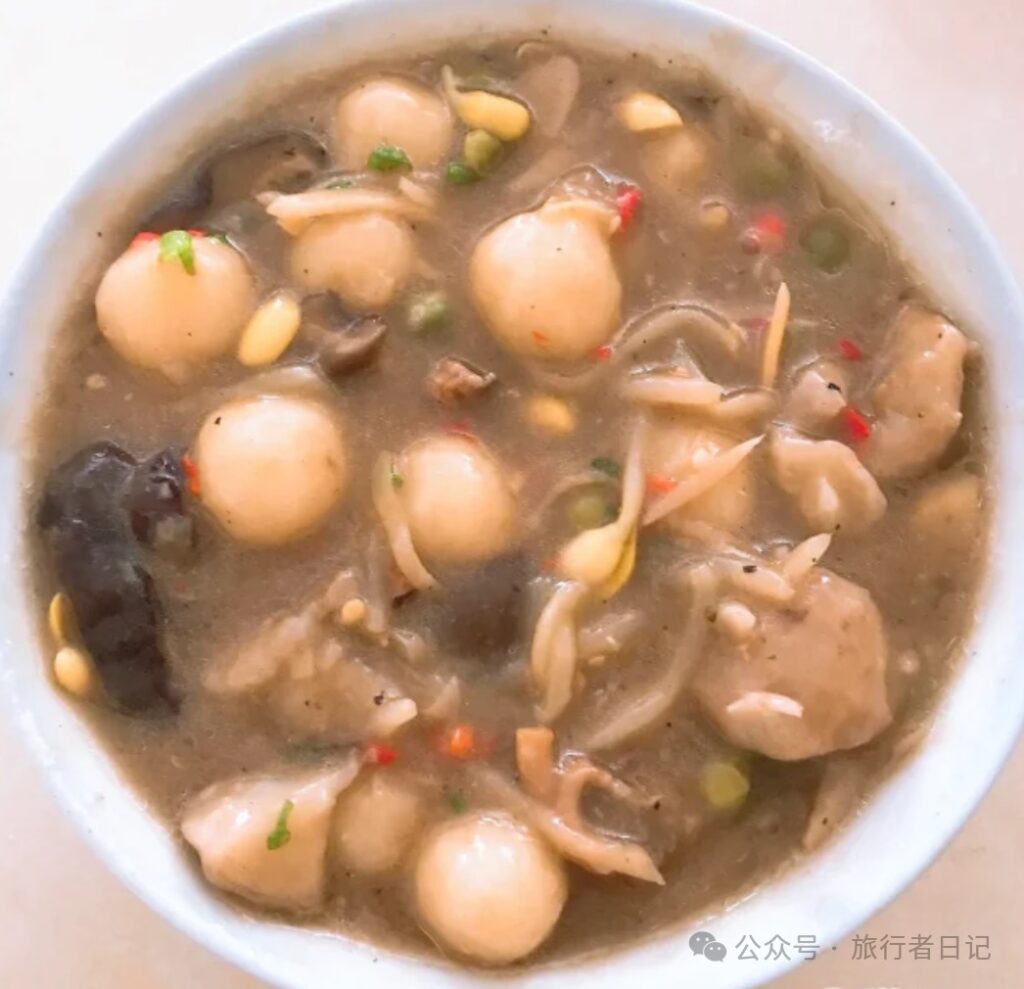
In Shangrao, people call steamed rice “rice bran,” and rice cake is a kind of pastry made from rice bran. In rural Shangrao, people make rice cakes during the Beginning of Summer to eat themselves or serve to guests.
Nowadays, you can hear the loudspeaker selling rice cakes in the streets and alleys of Xinzhou District all year round. The portions are large and cheap, especially in winter, eating a bowl of steaming hot rice cake is really comfortable!
Buckwheat Cake
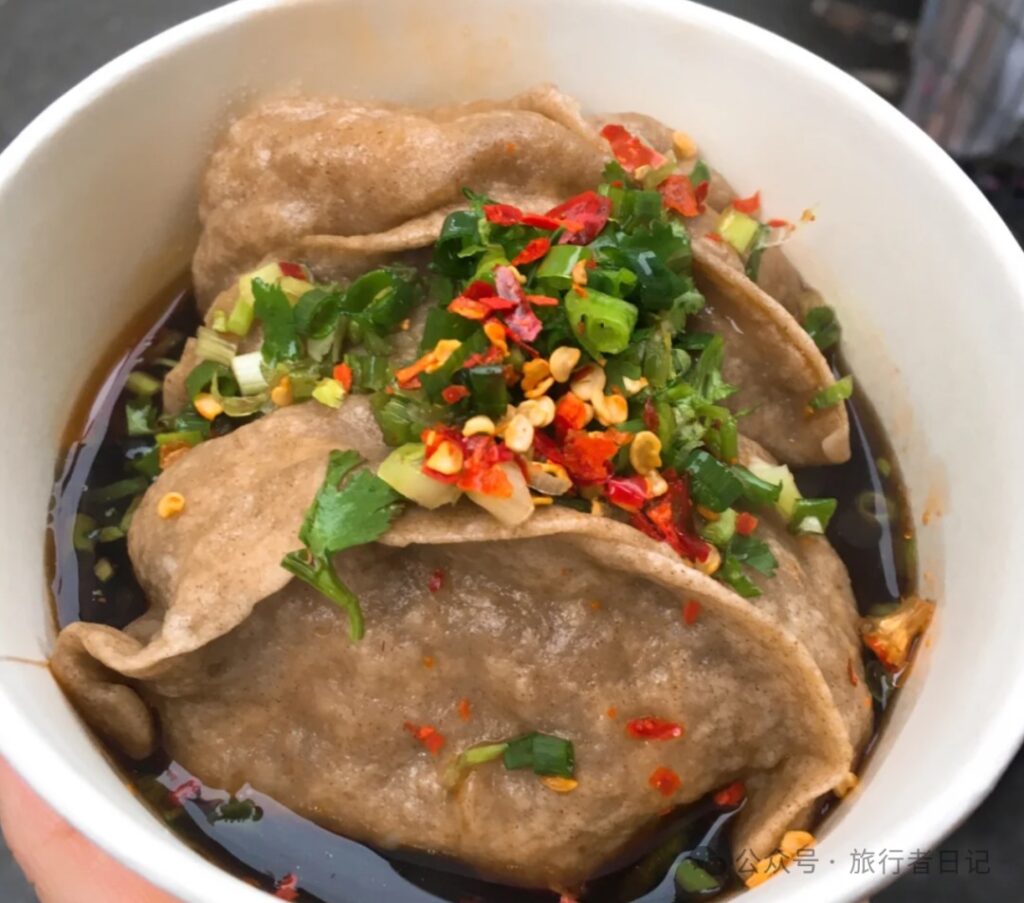
“Buckwheat cake, three stove fires,” this popular folk saying in Shangrao means that cooking buckwheat cake or steaming buckwheat sandwich doesn’t require as much time as other flour cakes. It only needs a short time of firewood added to the stove to be cooked. In old Shangrao, poor people wore thin clothes in winter, and eating buckwheat cake could keep them warm and full.
After the first spring thunder, Shangrao people no longer advocate eating buckwheat cake because of the increased labor time and difficulty in digestion. Nowadays, with improved living conditions, Shangrao people can enjoy buckwheat cake all year round.
Taro Beef

For Shangrao people, taro is a very familiar ingredient. In the streets and alleys of Xinzhou District and high-end hotels, taro beef is a “regular” on the menu, and almost no restaurant can do without it. The reason, besides the deliciousness of taro as a local specialty of Shangrao, is of course inseparable from the chemical reaction produced after taro and beef “fall in love.”
Sesame Cake Wrapped in Dough Sticks
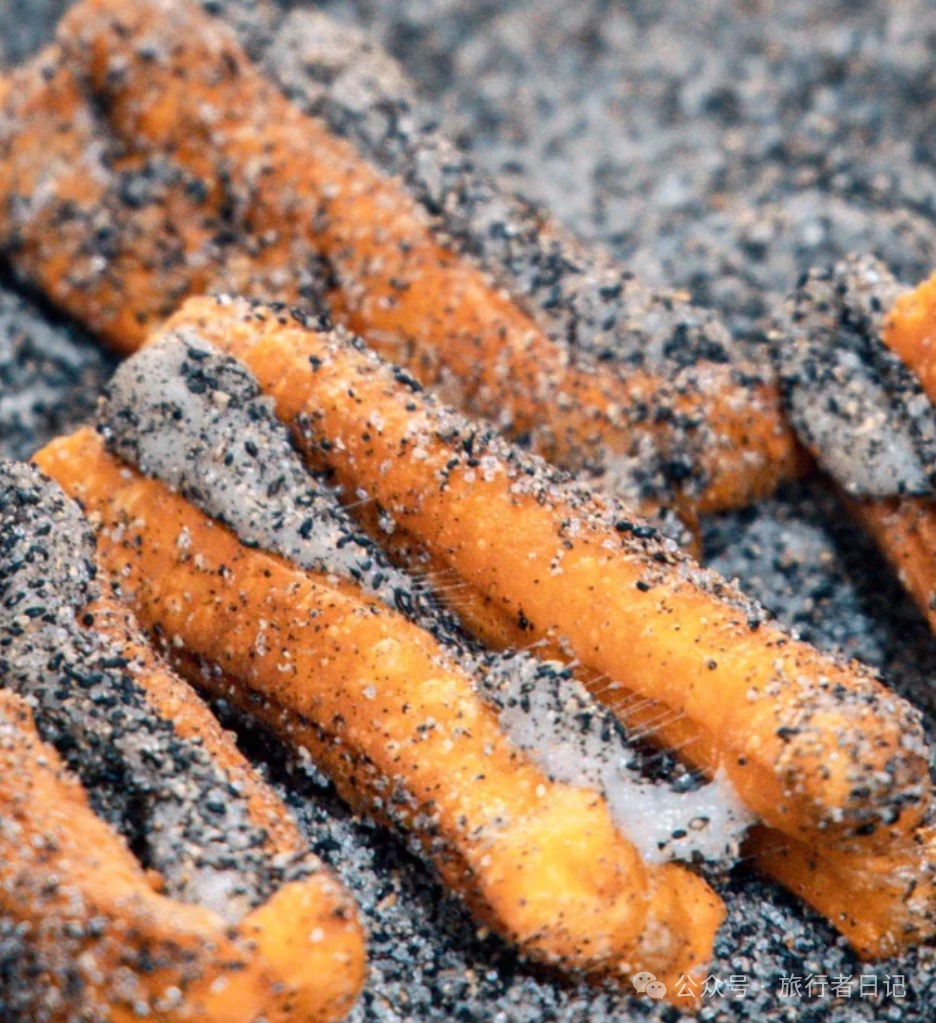
Shangrao people’s breakfast can’t do without it. Sesame cake can be eaten alone or with its perfect partner, dough sticks. Wrapping the sesame cake, which is sticky with fried bean sesame candy, with dough sticks is called dough stick-wrapped sesame cake, which is fragrant, sweet, and crispy.
Just one look, aren’t you already salivating? It is recommended to eat it with soy milk for the best flavor!
